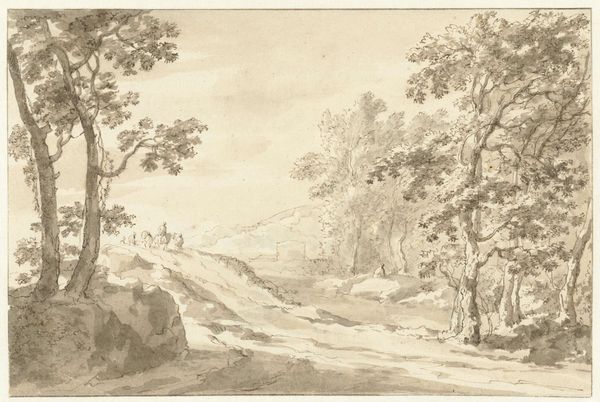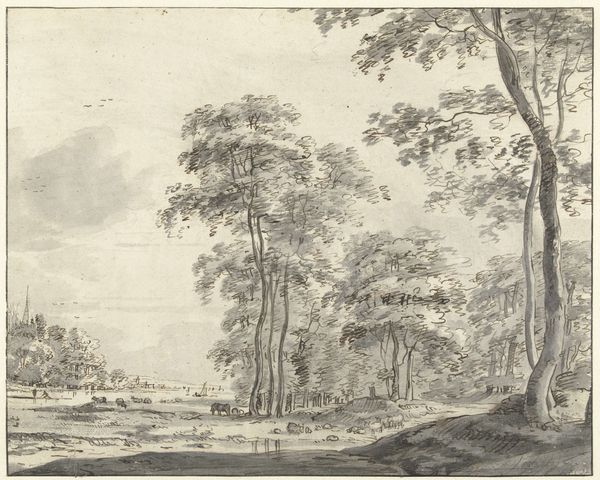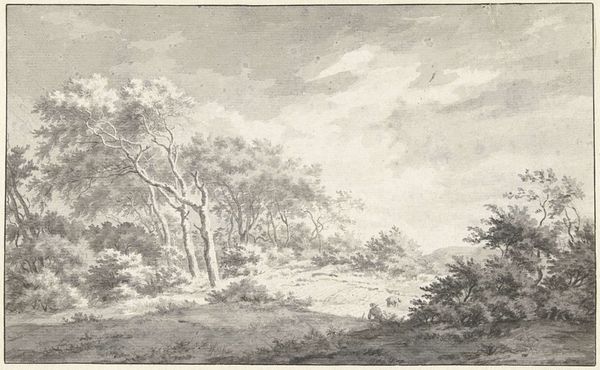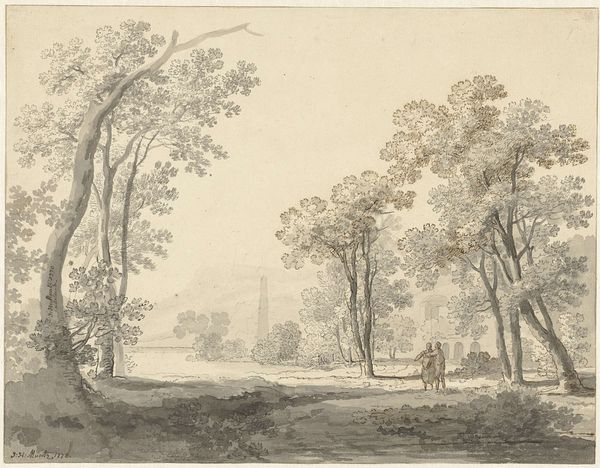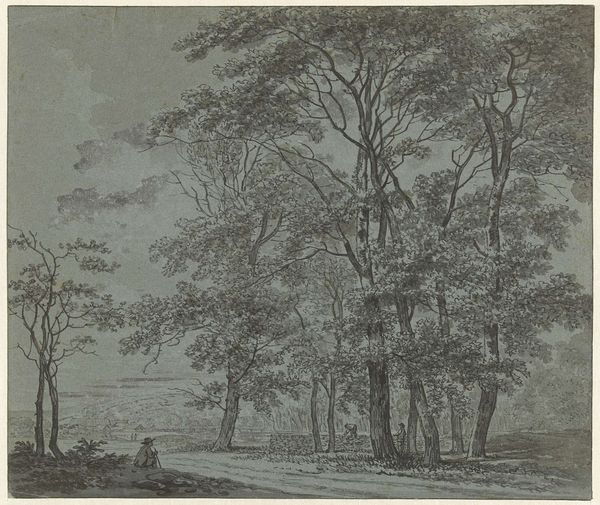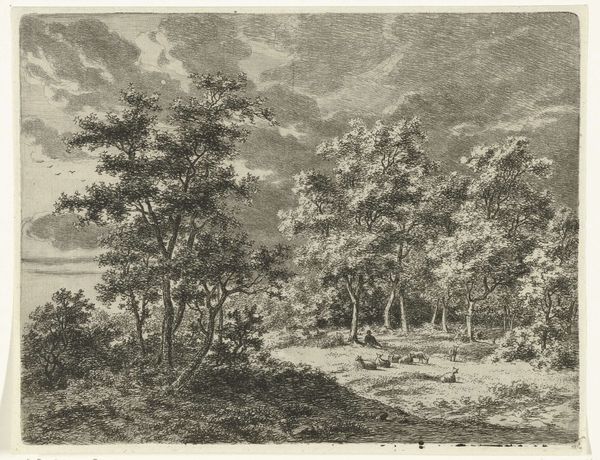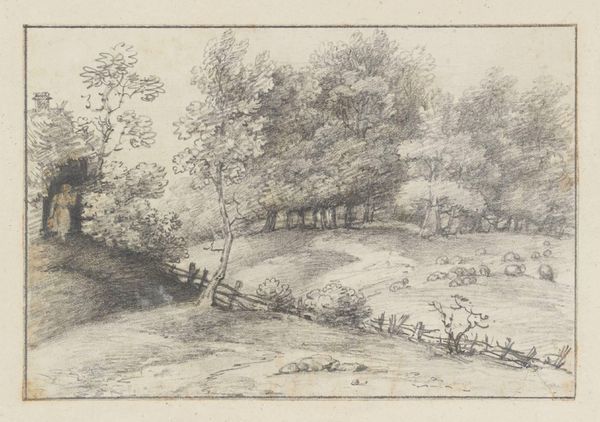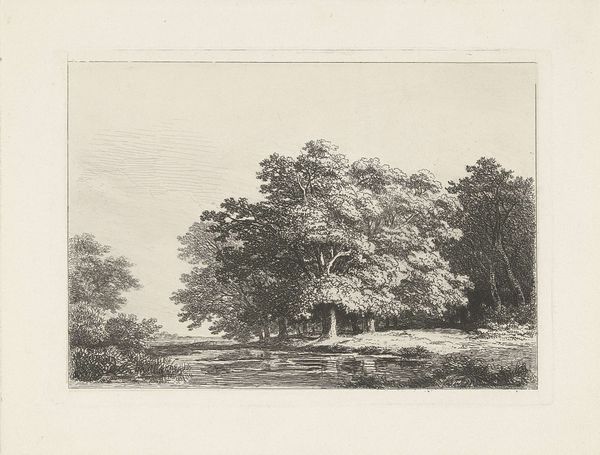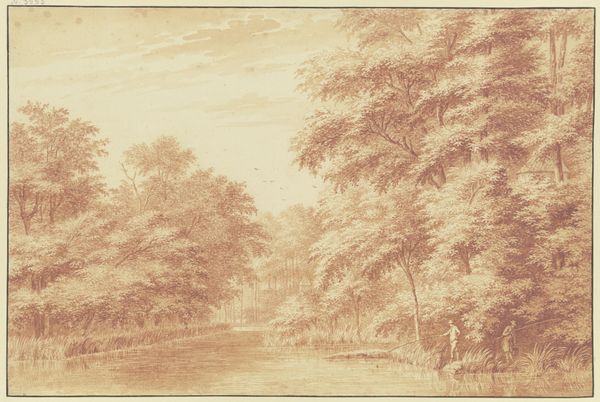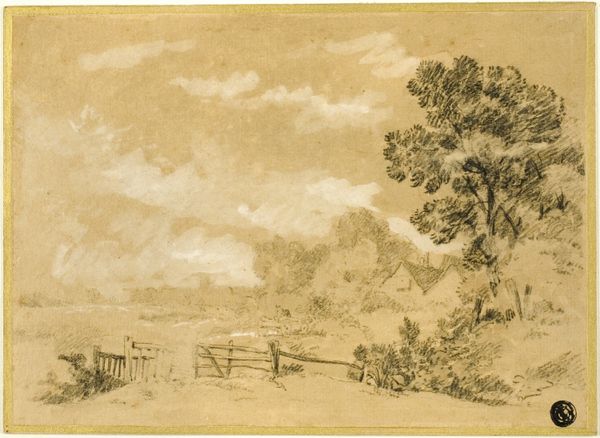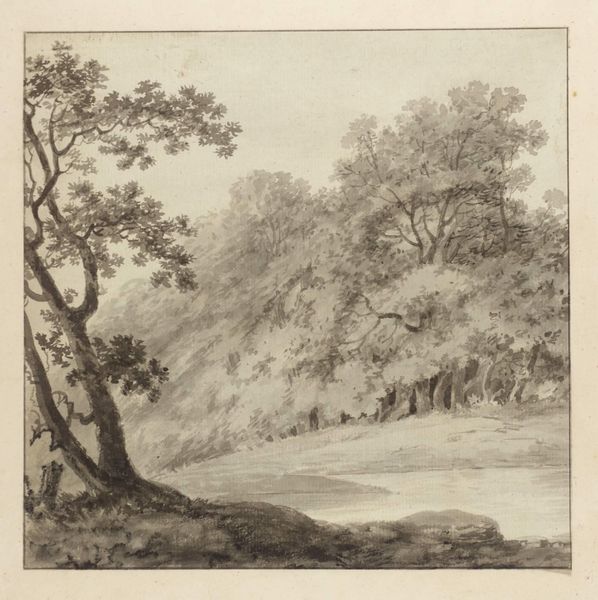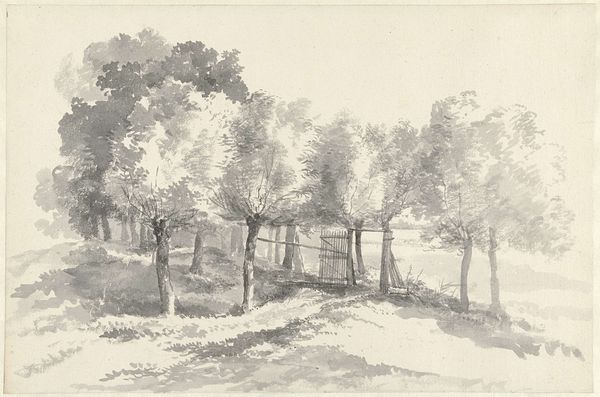
Dimensions: height 299 mm, width 421 mm
Copyright: Rijks Museum: Open Domain
Editor: Here we have Jacob Cats's "Landscape with a Road under Trees" from 1769, rendered in watercolor and pencil on paper. The tones are muted, almost monochromatic, giving it a serene but slightly melancholic feeling. What's your perspective on this landscape? Curator: Well, let's start with the obvious: the materiality. Paper, pencil, watercolour – these are relatively accessible materials, indicative of a growing market for art beyond the elite in the late 18th century. It’s "plein air," pointing to the increased mobility and availability of materials that enabled artists to work directly from nature. Consider also the pigment choices; why this palette and what does it suggest about availability and economic concerns about this kind of reproduction of painting traditions? Editor: That's interesting. I hadn’t thought about how the materials themselves speak to accessibility and a changing art market. Curator: Precisely. And look at the "sketch" aesthetic. It suggests a rapid capturing of a fleeting moment. Think about how this contrasts with the highly finished, commissioned landscapes of earlier periods, focusing on formal gardens and property boundaries meant to represent wealth. What kind of statement might this unrefined image represent regarding ownership, labour and the commons? Editor: So, you're saying the medium and the style reflect a shift in both artistic practice and the social role of art. Instead of idealized portrayals of wealth, this is… what? A more democratic view? Curator: Potentially. Or, at least, it demonstrates the emerging aesthetic value placed on direct experience and the immediacy of nature accessible via these simple materials. A turn from the grand to the humble in production value reflecting perhaps broader social movements. Consider the romantic qualities implied and its influence on other social strata as it reproduces across social spheres. Editor: I see. So, reading this work through a materialist lens reveals connections to broader social and economic shifts, not just artistic ones. I'll never look at a "simple" landscape the same way again! Curator: Exactly. It is also vital to ask: what conditions were created to permit this change, and who directly benefited from them? It certainly makes you think about art history through a different framework.
Comments
No comments
Be the first to comment and join the conversation on the ultimate creative platform.
